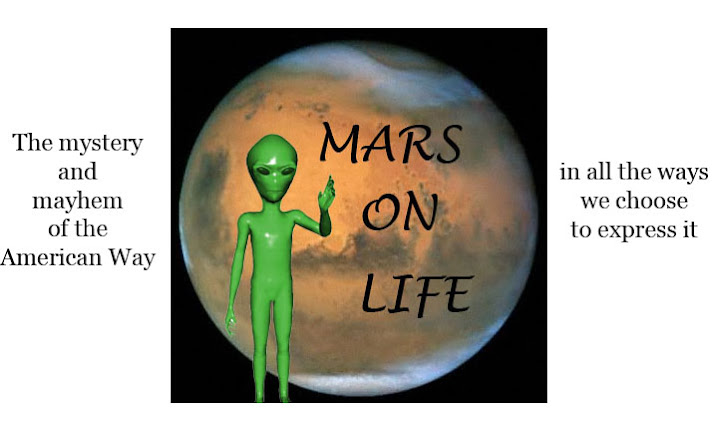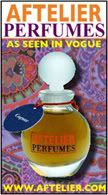
In an editorial about the winner of the 2007 Turner Prize, the Telegraph took a swipe at the dignity of the award and at the potter Grayson Perry, dismissively sniffing, "...a prize that thrives on publicity and controversy--one year it was won by Grayson Perry, a cross-dresser who makes pornographic pottery..."
Perry's been in the news twice more recently, once for stating that he wouldn't use his work to broach the subject of radical Islam, and again in a column called "My Life in Fashion," (Times, 12/12/07) in which he openly discusses how his sexual fantasies inform his style choices.
Mileage-wise, Perry has had more than one spin around the damning media wheel, as well as a concentric whirl about a belittling art circuit, and that's only taking the critical "craft" view of his ceramics into account.
Claire, his transvestite persona, is both a separate and an inclusive subject.
Perry's Disney-primped alter ego and the pots themselves address the subjugated state of women and ceramics in a male-dominated world where leaders must be audacious, loud, and aggressively self-confident.
I first came across Perry's work some years ago, when an artist friend mentioned something about a "pervert English potter." There was an urn with penises doing what penises do other than pissing; others had titles like "I Hate You, I Hate Myself" and "We've Found the Body of Your Child." The artist friend--a Manhattanite who had moved to Los Angeles--was hostile, and not for the usual Los Angeles reason, that someone else might get noticed first.
That's the thing about Los Angeles. It's not what you do or how you do it, but that it might be recognized when whatever it is that someone else does remains mysteriously the shadows, never to see the light of day. People have thrown themselves off the Hollywood sign for this, but most of them end up like the people in Perry's pot entitled Boring Cool People. These are the terminally hip whose cool facade must be maintained above all else: the performance. This is what gets you noticed eventually. There is no communication or reaching out or any of this feel-good Oprah bullshit. The outer shell, like the glaze on the pot, is tout.
whose cool facade must be maintained above all else: the performance. This is what gets you noticed eventually. There is no communication or reaching out or any of this feel-good Oprah bullshit. The outer shell, like the glaze on the pot, is tout.
This behavioral model never failed to confuse me. I write, someone else acts, and still another makes headdresses with the eyes of dead birds for a revue on the Vegas Strip, and yet there exists this thing, the pulse that keeps creative Los Angeles alive, that says you are not allowed to be more (or less) successful than your acquaintances. Boring Cool People are too hip to admit to either failure or defeat; they simply sit like a Pismo clam sucking the air-conditioned breeze of everyone else's coolness.
At first glance, Boring Cool People seems to be one of the simpler of Grayson Perry's works, and one without guerrilla-sexual premises. He constructed it, he said, to remark on hip irony versus sensualism, which it does accomplish, one glazed expression after another. Yet it is the viewer's experience of the pot and his or her relationship to the pot that is important, which ties into another key tenet of Perry's artistry: the artist in absentia. Perry absolves any responsibility for communication--passing the buck, so to speak, to the Freudian components of the psyche.
Another fun metaphor for Los Angeles is found in the pot titled Barbaric Splendor, in which the illusory no-escape, dream big, dream often clause is revealed as appearing from beneath the veneer of a traditional Oriental urn with its motif of birds, branches, and flowers. This work is particularly British, or at least particularly parts of Britain, with its promise of "Dream Homes" and "Holiday of a lifetime" in a wet and dreary northern industrial town. It happens here, too, and it's a killer, as much of a killer as any dead dream that was supposed to happen but didn't. The sun only shines in the absence of empty promises; all it takes is a one-way ticket and a lucky break. Most of Hollywood dines out on stories like that, and chokes on them. The girls at the bus stop, the boy with the hair, the screenwriter with bad grammar and a bad pitch.
traditional Oriental urn with its motif of birds, branches, and flowers. This work is particularly British, or at least particularly parts of Britain, with its promise of "Dream Homes" and "Holiday of a lifetime" in a wet and dreary northern industrial town. It happens here, too, and it's a killer, as much of a killer as any dead dream that was supposed to happen but didn't. The sun only shines in the absence of empty promises; all it takes is a one-way ticket and a lucky break. Most of Hollywood dines out on stories like that, and chokes on them. The girls at the bus stop, the boy with the hair, the screenwriter with bad grammar and a bad pitch.
Further relationship can be drawn between the warm, enhancing coloring of the original motif and the cool, almost fluorescent hue of the street scene, as ghastly and revelatory a lighting as man can design. And on top of it all, a teddy bear hanged in effigy. Death to the childhood Pooh-dreams.
Images: Grayson Perry, This Is London
Pots: Saatchi and Miro Galleries
Monday, December 17, 2007
Pot Head
Labels:
Barbaric Splendor,
Boring Cool People,
Grayson Perry
Subscribe to:
Post Comments (Atom)









2 comments:
I really like these works, though I don't have anything substantive to say...totally drained right now and still trying to catch up on all your excellent posts...your blog continues to fascinate.
PS - If you are up to it, it would be great to email sometime...
Riz, I did try to e-mail you a week or so ago, but didn't get a reply. Probably in your spam or deleted, so why not drop me a line on mine and we'll get it sorted?
Post a Comment